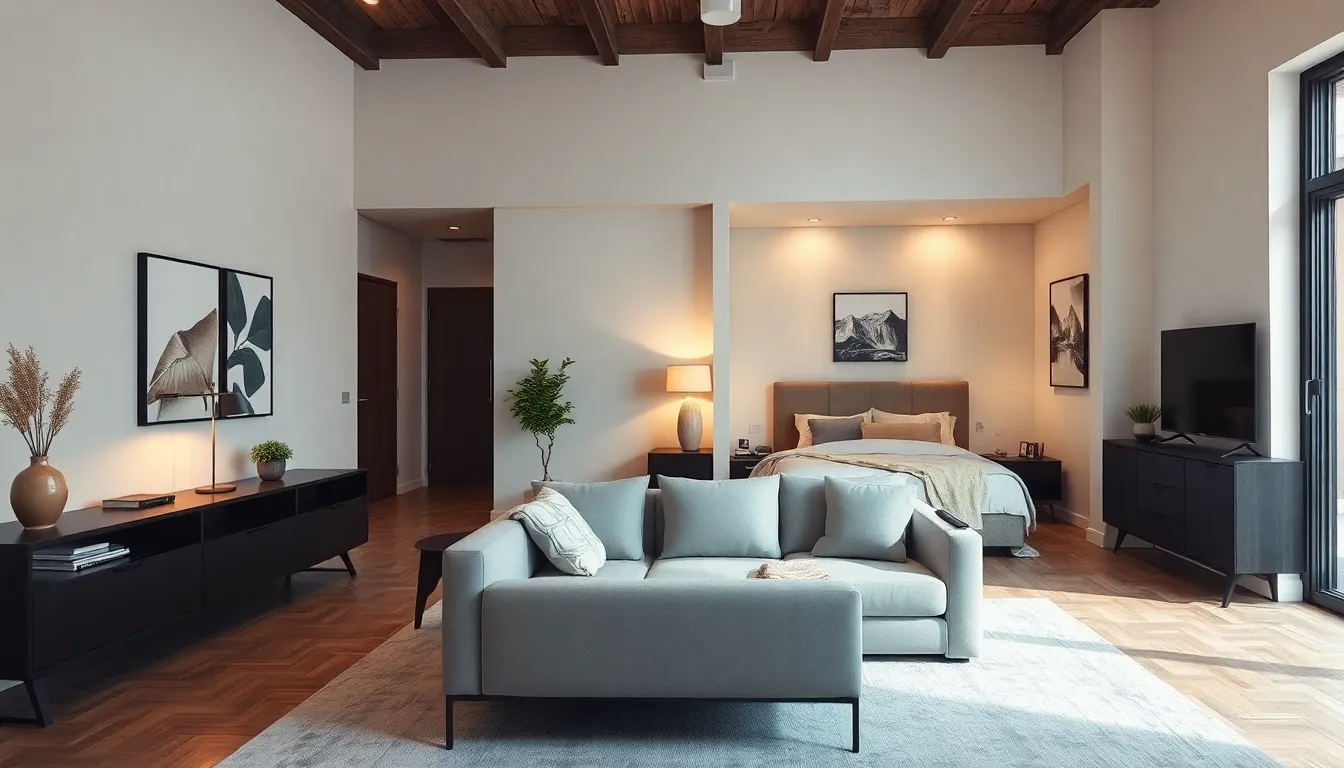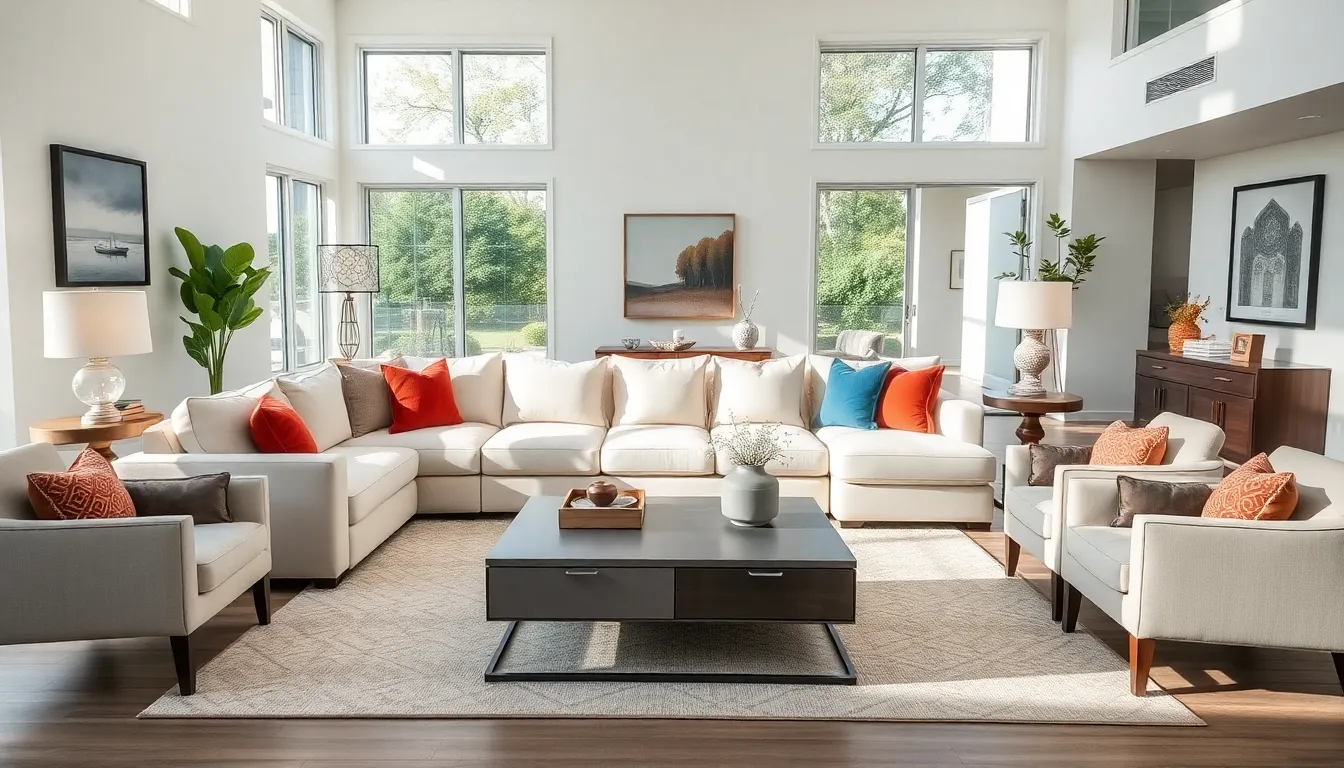When it comes to selling a home, choosing the right furniture can make all the difference. Imagine walking into a space that feels both cozy and sophisticated, where every piece tells its own story. You don’t want your home looking like a yard sale gone wrong, do you? With this guide, we’ll explore how to select the perfect furniture that doesn’t just fit your space but enhances its appeal. Whether your style leans towards modern sleekness or charming rustic vibes, it’s time to learn how to impress potential buyers and make them feel right at home.
Table of Contents
ToggleUnderstanding Your Property’s Style

Before diving into furniture selection, it’s crucial to grasp the architectural style of your property. Each style, be it contemporary, traditional, or mid-century modern, has characteristics that dictate the best fit for furnishings. For instance, a sleek, minimalist home screams for furniture with clean lines and understated elegance. Think about your space: does it exude a warm, inviting aura, or is it more formal and rigid?
Understanding your property’s style not only guides your choice of furniture but also aids in establishing a cohesive look throughout each room. Consider the color palette and overall vibe of your home. If your walls feature a bold hue, you might want furniture in softer tones to create balance. Contrast can be powerful, but harmony is the key to making any space feel polished and attractive.
Finally, remember that each room serves a unique purpose and, so, demands furniture that complements it. A cozy bedroom needs inviting, soft textures, whereas a modern office might thrive with sturdy pieces showcasing sleekness and professionalism.
Identifying Key Furniture Types
Once the property’s style is understood, it’s time for the fun part: selecting the key furniture types. This typically encompasses essentials such as sofas, chairs, dining tables, and beds, but don’t overlook accent pieces, such as coffee tables and side tables, that add character.
Sofas set the stage for living spaces. A large sectional can be perfect for a family area, while a minimalist loveseat might be more suitable for smaller, cozier spaces. Opt for durable yet stylish fabrics. Remember, potential buyers visualize their lives in your home: they need to picture themselves curling up on that sofa with a good book, not falling into a sagging seat.
Dining tables play another pivotal role. They’re not just functional: they’re where memories are made. Choose tables that reflect your home’s style, do you prefer a rustic farmhouse table or a sleek glass top? Chairs that complement the table are also significant. Make sure they’re comfortable so that whoever buys your home imagines family dinners and entertaining guests.
Other accent furniture pieces contribute significantly to the aesthetic. From thoughtful decor to functional items like bookshelves, the right mix enhances the overall visual experience.
Choosing the Right Materials and Finishes
Material selection heavily influences not just the look of your furniture but also its longevity and functionality. Each choice carries weight, pun intended.
Wood is a classic choice that can add warmth and character to any piece. Higher-quality woods, like oak or walnut, tend to hold up better over time. If a rustic style is what you’re after, reclaimed wood can be a wonderful choice that tells a history of sustainability.
On the flip side, metal finishes can offer a modern touch. Stainless steel or wrought iron can create a sleek look while ensuring strength. If your property leans towards industrial aesthetics, metallic furniture pieces should be on your radar.
Don’t ignore the fabrics, either. Whether it’s for upholstery or drapes, opt for materials that balance comfort and practicality. Microfiber and leather are excellent choices for busy families, while linen and cotton provide a light, airy feel ideal for a serene atmosphere.
Color finishes are equally important. A matte finish can suit a more contemporary vibe, while gloss might complement traditional styles. Eventually, each choice should resonate with the overall style of the property.
Balancing Functionality and Aesthetics
Finding the sweet spot between functionality and aesthetics is essential for maximizing appeal. Furniture doesn’t merely serve decorative purposes: it should also make life easier and more enjoyable.
For instance, consider multifunctional pieces. A coffee table with storage can help keep clutter at bay while also serving as a stylish centerpiece. Sofa beds can transform a living space into a guest room without sacrificing items of elegance.
When arranging furniture, flow is key. Ensure that pathways are clear, allowing easy movement from room to room. Around dining tables, leave space for chairs to be pulled out without fuss.
Aesthetically, don’t shy away from layering textures and colors. Have an engaging mix, whether through throws, pillows, or artwork, to convey warmth while maintaining the functionality of each item. When buyers notice thoughtfully arranged spaces, they’ll be more inclined to envision living in that home.
Maximizing Space with Smart Furniture Choices
In the world of real estate, space matters immensely. Ensuring each room feels spacious and inviting can be achieved through intelligent furniture choices.
First and foremost, choose appropriately sized pieces. Oversized furniture in smaller rooms can make spaces feel cramped: balance is vital. If a room looks airy, potential buyers won’t feel claustrophobic.
Incorporating furniture that serves multiple purposes is also an excellent way to maximize space. Think about ottomans that open up for storage and benches that double as seating.
Using mirrors strategically can also give the illusion of a larger area by reflecting light and color. When placed smartly, they can create depth in your staging and amplify natural light, which makes any room more inviting.
Staging Tips for Selling with Furniture
Staging is where all this thoughtful furniture selection comes together. The goal is to create an inviting environment that pulls potential buyers in, allowing them to visualize their future within the walls of your property.
Start with decluttering. Keep only essential pieces that enhance the space: less is often more. This can highlight unique architectural features without distractions.
Next, arrange furniture to create cozy conversation areas. Pull couches and chairs inward rather than against the walls. This invites warmth into the space and fosters interaction, making potential buyers feel welcome.
Add finishing touches like fresh flowers or tasteful accessories to elevate the aesthetic and provide personalization without overwhelming the senses. A well-staged home resonates emotionally, helping buyers feel at home instantly.




